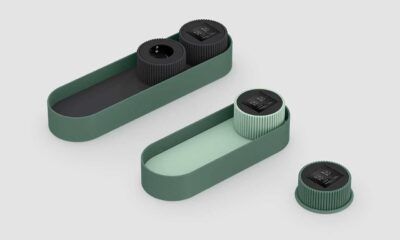Lifestyle
Discover the Benefits of Slow-Release Fertilizers for Your Garden

A gardening enthusiast with 40 containers filled with annuals has expressed frustration over the labor-intensive process of mixing fertilizers with water. Seeking a more efficient solution, they inquired about the use of slow-release fertilizers. Many gardeners, including expert Jerry Filipkigerald, advocate for these products due to their convenience and effectiveness.
Slow-release fertilizers contain nutrients that are either pelleted, chemically altered, or coated to allow for a gradual release. This method significantly reduces the frequency of fertilization, making it an attractive option for those with multiple containers. Formulations vary widely, including all-purpose blends like 20-20-20, as well as specialized products designed for blooming plants and acid-loving species. Organic options are also available for environmentally conscious gardeners.
For individuals managing numerous pots, applying a slow-release fertilizer at planting time can simplify maintenance. This approach ensures that as plants are watered, they receive the appropriate amount of nutrients over time. This system minimizes nutrient loss from leaching, a common issue with traditional soluble fertilizers.
Historically, slow-release fertilizers were primarily used in commercial settings. Their availability to home gardeners has transformed fertilization from a tedious task into a more manageable process. Many products can sustain nutrient release for up to three months, depending on watering frequency. This longevity means that a single application can often last an entire growing season, drastically reducing the need for constant attention.
Another significant advantage of slow-release fertilizers is the reduced risk of plant burn from overapplication. Because of their gradual release formulation, these products mitigate the chances of harming plants due to improper application or insufficient watering.
There are some considerations to keep in mind, particularly for young plants. Initially, they may experience a phase of low nutrient release immediately after application, which can be followed by a heavier release, tapering off towards the end of the season. To address this potential uneven nutrient distribution, manufacturers are now developing blended fertilizers that combine both regular and slow-release components.
Gardeners looking to create their own blend can mix an all-purpose fertilizer—like 14-14-14—at a quarter of the recommended strength with the slow-release option at planting. This strategy can help ensure a more consistent nutrient supply throughout the growth cycle.
For those seeking further information on gardening techniques and advice, Jerry Filipkigerald invites readers to explore his online column in the Edmonton Journal or to reach out via email. His book, Just Ask Jerry, also offers valuable insights for enthusiastic gardeners. Follow him on social media for regular updates and tips.
-

 Politics4 weeks ago
Politics4 weeks agoSecwepemc First Nation Seeks Aboriginal Title Over Kamloops Area
-

 World5 months ago
World5 months agoScientists Unearth Ancient Antarctic Ice to Unlock Climate Secrets
-

 Entertainment5 months ago
Entertainment5 months agoTrump and McCormick to Announce $70 Billion Energy Investments
-

 Science5 months ago
Science5 months agoFour Astronauts Return to Earth After International Space Station Mission
-

 Lifestyle5 months ago
Lifestyle5 months agoTransLink Launches Food Truck Program to Boost Revenue in Vancouver
-

 Technology3 months ago
Technology3 months agoApple Notes Enhances Functionality with Markdown Support in macOS 26
-

 Lifestyle3 months ago
Lifestyle3 months agoManitoba’s Burger Champion Shines Again Amid Dining Innovations
-

 Top Stories2 months ago
Top Stories2 months agoUrgent Update: Fatal Crash on Highway 99 Claims Life of Pitt Meadows Man
-

 Politics4 months ago
Politics4 months agoUkrainian Tennis Star Elina Svitolina Faces Death Threats Online
-

 Sports5 months ago
Sports5 months agoSearch Underway for Missing Hunter Amid Hokkaido Bear Emergency
-

 Politics5 months ago
Politics5 months agoCarney Engages First Nations Leaders at Development Law Summit
-

 Technology5 months ago
Technology5 months agoFrosthaven Launches Early Access on July 31, 2025





















